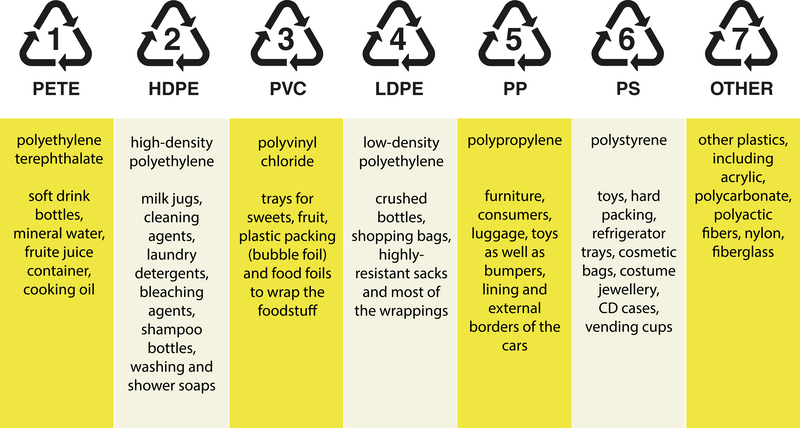Transforming Packaging and Cardboard Waste into Sustainable Practices
In today's fast-paced, consumer-driven world, packaging plays a vital role in product safety and branding. However, with the rise of e-commerce and globalization, an unprecedented amount of packaging, especially cardboard waste, is generated every day. This widespread use of packaging materials has led to environmental challenges, such as increased landfill waste and resource depletion. Fortunately, innovative approaches and sustainable practices are emerging to transform packaging and cardboard waste, reshaping how businesses and consumers interact with these everyday materials.

The Importance of Sustainable Packaging Solutions
Packaging serves many essential functions, including protecting goods, providing information, and enhancing retail appeal. Yet, traditional packaging materials often have a significant environmental footprint, as they require raw materials such as trees, water, and energy for production. When discarded, these items frequently end up in landfills or incinerators, contributing to pollution and greenhouse gas emissions.
The shift towards sustainable packaging practices is critical to minimizing environmental harm and supporting the transition to a circular economy. Creating value from packaging waste, particularly cardboard, not only conserves resources but also inspires businesses and individuals to adopt responsible disposal and recycling habits.
Why Cardboard Waste Deserves Attention
- High Volume: Cardboard boxes and cartons account for a significant proportion of packaging waste worldwide.
- Recyclability: Cardboard is easily recyclable, yet a vast amount is not correctly sorted or processed.
- Resource Intensity: Manufacturing new cardboard requires considerable energy and raw materials, including trees.
Focusing on transformative practices for packaging and cardboard waste can curb unnecessary environmental impacts while promoting business efficiency and innovation.
Key Strategies in Transforming Cardboard Waste
1. Comprehensive Recycling Programs
The most direct way to address packaging and cardboard waste is through robust recycling initiatives. Local governments, businesses, and recycling companies can collaborate to:
- Set up accessible recycling bins for consumers and employees.
- Educate the public on proper disposal and sorting techniques.
- Invest in technology to improve sorting and processing efficiency.
Recycling cardboard reduces the need for virgin materials, saves energy, and cuts carbon emissions--a pivotal step in developing sustainable packaging solutions.
2. Embracing Reuse and Repurposing
Not all packaging waste must be recycled in the traditional sense. Reusing cardboard for art projects, moving boxes, or organizational purposes helps extend the lifespan of packaging before it enters the recycling stream. Businesses are increasingly adopting reusable packaging systems for transport and storage, reducing waste generation and sourcing costs.
3. Innovative Biodegradable and Compostable Alternatives
Developers are creating biodegradable and compostable packaging materials that break down naturally, returning nutrients to the soil instead of polluting ecosystems. These alternatives, often made from agricultural byproducts, mushrooms, or plant fibers, can replace or supplement conventional cardboard, lowering the environmental footprint.
4. Circular Economy and Upcycling Approaches
The circular economy principle focuses on keeping packaging materials in use for as long as possible. Upcycling transforms waste cardboard into higher-value products: furniture, insulation, or even innovative construction materials. Such creative repurposing drives sustainability by reducing demand for virgin resources and promoting environmental stewardship.
5. Optimizing Packaging Design
- Lightweighting: Using less material without compromising functionality.
- Modular design: Creating standardized sizes that minimize wasted space and excess packaging.
- Easy separation: Ensuring that different packaging components (plastic windows, tapes, or foils) can be easily separated for recycling.
Companies can reduce the amount of packaging waste generated in the first place by prioritizing eco-friendly design and manufacturing methods.
Emerging Technologies in Sustainable Packaging
Smart Sorting and Automated Recycling
Advancements in automated waste sorting systems use artificial intelligence, robotics, and machine vision to quickly separate cardboard from other packaging materials. This innovation boosts sorting accuracy, increases processing capacity, and ensures high-quality recycling outputs.
Digital Watermarks and Trackability
Smart packaging technologies, such as digital watermarks or QR codes, allow for better tracking of packaging materials throughout their lifecycle. Consumers and waste processors alike can quickly identify the correct recycling or disposal methods, reducing contamination and improving recycling rates.
Bio-Based and Recycled Content Innovations
Material scientists are developing cardboard alternatives and composite materials made with a higher proportion of recycled fibers or bio-based additives. These products offer enhanced performance while reducing dependence on virgin wood pulp. Some breakthroughs include:
- Water-resistant coatings made from natural polymers.
- Plant-based adhesives replacing synthetic glues.
- Hybrid packaging blends using agricultural waste and recycled cardboard.
Business Benefits of Sustainable Packaging Practices
Adopting sustainable packaging and waste management practices is not just an ethical imperative; it also presents tangible business advantages:
- Cost Savings: Reduced raw material consumption and waste disposal fees.
- Improved Brand Image: Eco-conscious consumers prefer businesses with visible sustainability commitments.
- Regulatory Compliance: Many governments are tightening packaging waste regulations, incentivizing early adoption of green practices.
- Operational Efficiency: Lean packaging designs and better recycling systems streamline logistics and reduce complexity.
Companies that prioritize the transformation of packaging and cardboard waste can gain a competitive edge, foster customer loyalty, and future-proof their operations against evolving market expectations.
The Role of Consumers in Sustainable Packaging
Consumers play a crucial part in the push for environmentally responsible packaging. By making mindful purchasing choices and practicing correct disposal and recycling habits, individuals can accelerate the shift to a circular packaging economy.
How to Reduce Packaging Waste at Home
- Choose recycled or minimal packaging when shopping online or in stores.
- Avoid single-use packaging by bringing reusable bags, jars, or containers.
- Flatten and sort cardboard boxes before putting them in recycling bins.
- Get creative by reusing boxes for storage, crafts, or gifts.
- Educate yourself and others about local recycling guidelines to prevent contamination.
Through small, consistent actions, every consumer can help decrease the environmental impact of packaging and accelerate the adoption of sustainable cardboard waste practices.
Challenges in Achieving Sustainable Packaging Transformations
Transitioning to sustainable packaging and effective waste management is not without obstacles:
- Infrastructure Gaps: Not all regions have advanced recycling facilities or efficient collection systems.
- Contamination: Food residue, tape, or mixed materials can render cardboard and packaging unrecyclable.
- Cost Barriers: Developing new materials or processes may require upfront investment.
- Consumer Confusion: Inconsistent labeling and unclear recycling instructions can lower participation rates.
Overcoming these challenges requires collaboration between manufacturers, governments, waste management companies, and consumers, as well as ongoing education and innovation.
Case Studies: Innovative Approaches to Cardboard Waste Management
1. E-Commerce Giants Streamlining Packaging
Major retailers and e-commerce platforms have begun investing in sustainable packaging solutions, such as right-sizing packages, using recycled content, and launching take-back programs for used boxes. These efforts significantly reduce cardboard packaging waste across the supply chain.
2. Local Government Initiatives
Some municipalities have introduced *special curbside recycling programs* for packaging, separating clean cardboard from soiled or mixed materials to maximize high-quality recycling outputs.
3. Community Upcycling Projects
Grassroots organizations have launched workshops teaching residents and students how to upcycle cardboard waste into useful objects, art, or even shelter panels for temporary housing. These hands-on initiatives foster creative recycling and raise environmental awareness.

The Future of Sustainable Packaging and Cardboard Waste
As environmental concerns intensify, the movement to transform packaging and cardboard waste into sustainable practices is gaining momentum. Emerging regulations, consumer activism, and corporate responsibility initiatives will continue driving innovation in packaging design, materials, and waste management strategies.
Future trends likely to shape the industry include:
- Increased use of closed-loop recycling systems within companies.
- New materials that combine durability, compostability, and recyclability.
- Advanced data tracking to support producer responsibility and transparency.
- Widespread consumer education campaigns to encourage correct recycling behaviors.
Ultimately, transforming packaging waste and cardboard challenges into sustainability opportunities will depend on collaboration, technological progress, and a shared commitment to protecting our planet.
Conclusion: Taking Action for a Greener Tomorrow
The massive global volume of packaging and cardboard waste poses significant environmental and economic challenges. However, by embracing recycling, reuse, innovative materials, circular design, and community engagement, we can turn this waste into a valuable resource. Each step taken by businesses and consumers--no matter how small--contributes to a larger movement towards sustainability, resource efficiency, and environmental stewardship.
Transforming packaging and cardboard waste into sustainable practices is not a future ideal--it's a necessary path forward for thriving businesses, healthy communities, and a cleaner planet.